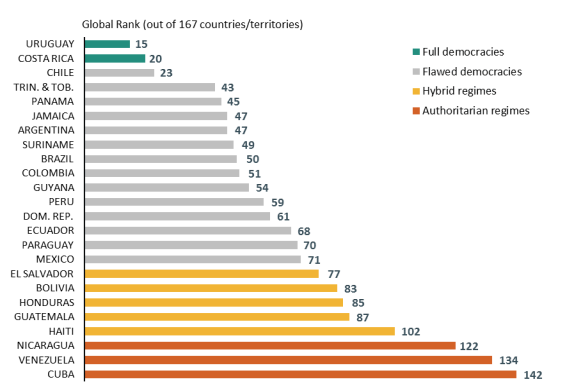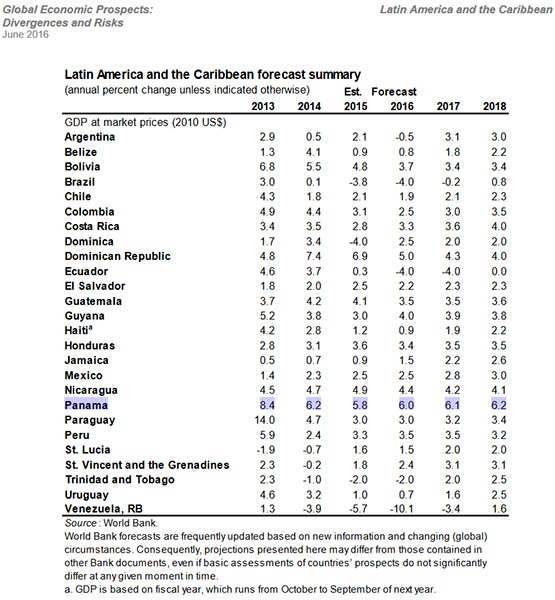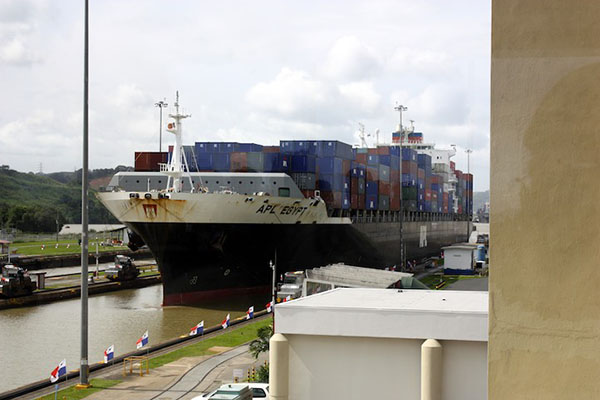Most of the countries of Central and South America achieved their independence from Spain and Portugal in the early nineteenth century, and I've already written about that in my notes on Latin and Central America in Revolt.
So, just to get us off to a quick start, these are the countries of Latin America with the original dates of independence in parenthesis.
- Chile (1810/1818 from Spain)
- Colombia (1810/1819 from Spain)
- Paraguay (1811/1816 from Spain)
- Venezuela (1811/1821 from Spain)
- Argentina (1816 from Spain)
- Peru (1821/1824 from Spain)
- Brazil (1822 from Portugal)
- Ecuador (1822 from Spain)
- Bolivia (1825 from Spain)
- Uruguay (1828 from Brazil)
- Guyana (1966 from the United Kingdom)
- Suriname (1975 from Netherlands)
- French Guiana (still an overseas department of France)
The dark side of the United States and Latin America
During the twentieth century, and especially after 1945, there were several CIA-backed interventions (CIA = Central Intelligence Agency) carried out to support authoritarian/dictatorial governments in Central and Latin America as part of the US fear of communism during the Cold War. This is a particularly nasty chapter in the history of American foreign policy. Here is a list of some of those interventions.
- 1948 Costa Rico
- 1954 Guatemala
- 1954 Paraguay
- 1959 Haiti
- 1961 Cuba, The Bay of Pigs invasion failed to achieve a regime change.
- 1964 Brazil
- 1971 Bolivia
- 1973 Chile, United States Intervention in Chile
- 1973 Uruguay, 1973 Uruguayan coup d'état
- 1976 Argentina
- 1980 El Salvador (Check out the story map project created by Katherine Hernandez (HIS 112), Atrocities of the Civil War in El Salvador)
- 1983 Grenada
- 1985 Nicaragua, Iran Contra
- 1989 Panama, the United States Invasion
- 1990 Peru, CIA in Peru
- Colombia, CIA Activities in Colombia and Covert Action in Colombia
The "worst," if you can call them that, were 1954 in Guatemala and 1973 in Chile.
In 1954, the CIA-backed a coup d'etat to overthrow democratically-elected president Jacobo Árbenz (1913-1971, a champion of social and agrarian reform (land redistribution). His policies ran afoul of the United Fruit Company, which lobbied the United States government to have him overthrown. The US was also concerned by the alleged presence of communists in the Guatemalan government. The military dictatorship of Carlos Armas (1914-1957) took power as the first in a long run of dictators in Guatemala. The authoritarian regime's policies led to decades of civil unrest and leftist, peasant insurgencies.
In another particularly controversial intervention, in 1973 in Chile, the CIA backed the overthrow of Salvador Allende (1908-1970), a Marxist who had won the presidency in a close, multi-candidate race. Upon assuming the presidency, Allende, with rather widespread support including that of the Communist Party of Chile, began to carry out a sweeping reform program, "La vía chilena al socialismo." A major part of this reform including nationalizing large industries, particularly copper. Now that was problematic because the biggest American corporations in Chile at the time were Anaconda and Kennecott copper companies. Let's also not forget that International Telephone and Telegraph was another American firm affected by Allende's policies.
Other aspects of Allende's reforms included the nationalization of health and education, and more importantly an expanded land redistribution scheme that had been started before Allende took office. This all looked to the CIA as another Cuban revolution, and so, with CIA support, on 11 September 1973, the Chilean military ousted Allende who committed suicide. General Augusto Pinochet (1915-2006) ruled as an authoritarian dictator until 1990.
If you are interested, here are just a few sources for you to get started.
- United States involvement in regime change in Latin America (Wikipedia)
- Some CIA documents are available re Latin America
- Gary G. Kohls, The Ten Most Lethal CIA Interventions in Latin America
- Liam Knox, A brief history of U. S.-led regime change in Latin America
- Adam Bensaid, The Secret History of US Interventions in Latin America
This American role in Central and Latin America is not really surprising given the economic role of US companies in much of Latin America and especially Central America. Maybe you've heard the term "banana republic" applied in reference to some of the countries of Central America because of the prominent role played there by American companies such as the United Fruit Company or the Standard Fruit Company. See, for example,
- Banana republic
- Where We Got the Term "Banana Republic"
- The Economist explains: Where did banana republics get their name
Now, what of economic and political modernization?
So, in terms of politics and the economy what has been taking place in Central and Latin America since the Second World War? Has there been "progress?" Let's take a quick look.
Question 1, How has democracy fared in Latin America since 1945?
Authoritarian strongmen were a frequent feature of the nineteenth century and into the early twentieth century in Latin America; they were often called "caudillos." Check out this definition:
The term caudillo originates from the Spanish word for head, cabeza, and describes the leader of a political faction, often linked to a band of armed men. Used in Spain since the time of the Reconquista, the term became increasingly common in Spanish America during the wars of independence. It initially had the positive connotation of a man fighting in defense of his land, but it gradually became linked to authoritarian rule by a strongman and was used pejoratively. Caudillos began their careers at the local level, and some garnered national support. Many took over the government of a country and were successful in maintaining it, while others faced strong opposition. In some areas they derived their power from the army, while in others they counted on their dependents. (source)
Wikipedia even has an extensive list of caudillos, and it is a quite lengthy list.
As I was browsing the web, I came upon this 1925 Foreign Affairs article by F. Garcia Calderon, Dictatorship and Democracy in Latin America (here). Foreign Affairs is the most influential scholarly journal focusing on foreign relations in the world, and I found it interesting that as far back as the mid-1920s, the journal saw fit to examine the nature of authoritarian regimes in the Americas.
We might wonder if this is still the case. Have there been many military and civilian dictatorships in Central and Latin America? The number is actually not as high as I thought that it was. According to Conservapedia, while the list is long, it is not that long for the period from 1945 to the present. Numbers, of course, do not account for the quality of the brutality or evilness of the dictator, such as Alfredo Stroessner, François Duvalier, Augusto Pinochet or Anastasio Somoza Debayle. I've also noted the frequent appearance of dictatorship in post-1945 Africa in my notes on Decolonization and Nation-Building in Africa. But politics has changed in the Americas.
There are several world organizations that assess the state of democracy in countries around the world. The Economist, Democracy Index 2019, shows a pretty good state of democracy in the Americas. A better version of that information and map appears at the Statista website. And Democracy in Latin America and the Caribbean: A Compilation of Selected Indices has a great explanation of a number of differing democracy indexing projects. Look closely at this graph.

Note that there are only three countries classified as authoritarian (Cuba, Nicaragua and Venezuela) and two as full democracies (Costa Rica and Uruguay).
Question 2, Has there been a Latin American economic miracle since 1945?
Let's look at the positive strides of modern Latin America. The best starting place is the article by Ross Dawson, Latin America’s growth and development is as exciting as East Asia’s which includes some nice graphs of recent GDP growth up to 2014 in selected countries. For forecasts of future grow, see Mayra Rodriguez Valladares Latin American Markets Look Promising In 2019 And Beyond from Forbes. The article highlights the growing middle class in countries and the economic potential that brings. Of course, since this article is from Forbes, the highlight is on investing and market growth.
Here is a statistics table of growth prospects. (source)

There are quite a few statistics available online, such as Latin America & Caribbean, which provide some overall data for the entire Latin American region.
Another interesting statistical compilation, which resembles the Democracy Index just covered above, is the Human Development Index (HDI). Have a look at the List of Latin American countries by Human Development Index. You can also look at the entire Human Development Report for 2019 published by the United Nations Development Programme (see page 343). The top five countries are Norway, Switzerland, Ireland, Germany, and Hong Kong. (The United Kingdom and the United States are tied at number 15.) The highest ranked Latin American country is Chile at 42.
![]()
Some recommended online resources
- At Boundless World History, see the section on South America and Latin America in the Cold War (well done).
- Brazilian Independence and the South American Revolutions
- Venezuela: The Perils of Prosperity
- Brazil: The Awakening Giant
- Dynamics of Political Transformation in Latin America
- History of Latin America (Wikipedia)
- Chelsea Miller (HIS 112 student) created this nice site on the Nazca Geoglyphs in Peru.
- The story map project created by Katherine Hernandez (HIS 112), Atrocities of the Civil War in El Salvador
- For extra credit please suggest to your instructor a relevant website for this unit of the course. Send the title of the site, the URL and a brief explanation why you find the information interesting and applicable to the material being studied in this unit.
